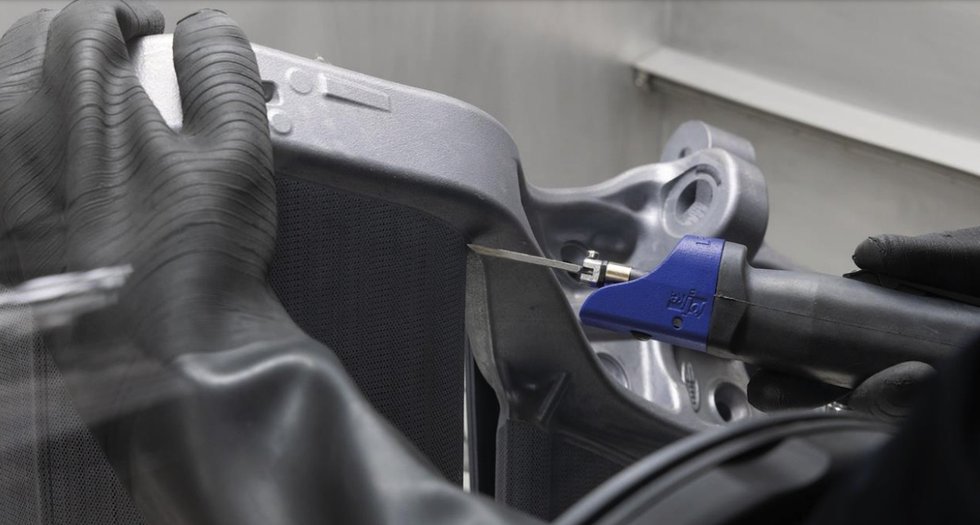ANYCUBIC Photon Mono 4, Resin 3D Printer with 7'' 10K Mono LCD Screen, Stable LighTurbo Light Source and 70mm/h Fast Printing, Print Volume 6.04'' x 3.42'' x 6.49''
$159.99 (as of June 18, 2025 23:32 GMT +00:00 - More infoProduct prices and availability are accurate as of the date/time indicated and are subject to change. Any price and availability information displayed on [relevant Amazon Site(s), as applicable] at the time of purchase will apply to the purchase of this product.)Have you ever wondered how a large-scale energy technology company improves its manufacturing processes to become more efficient and cost-effective? Well, the story of Baker Hughes’ implementation of the Oqton Manufacturing OS (MOS) serves as an enlightening example.
Baker Hughes Implements Oqton Manufacturing OS for Efficiency Boost

Buy Photon Mono M5 Get Free 1KG Resin
Setting the Scene
Baker Hughes, a prominent energy technology company, recognized the need to evolve their manufacturing processes. In an age where efficiency and regulatory compliance are not just desired but essential, Baker Hughes sought out a solution that could scale with their needs. Enter Oqton Manufacturing OS. Deployed in their central manufacturing facilities in Houston, Texas, this software has revolutionized their workflow, marking a significant partnership between Baker Hughes and Oqton, which is a subsidiary of 3D Systems.
The Beginning of a Strategic Partnership
Baker Hughes didn’t jump into this endeavor blindly. The commercial software agreement with Oqton was established in March 2023, but the actual utilization began in June 2024. This meticulous process underscores the importance of thorough preparation and strategic planning when overhauling a manufacturing system.
The Significance of Oqton Manufacturing OS
The Oqton Manufacturing OS isn’t just another software system; it’s an end-to-end solution designed to streamline and enhance the entire manufacturing workflow. This comprehensive platform manages, optimizes, automates, monitors, and traces actions and data, aiming to maximize operational efficiency.
Let’s break down some of the key features and benefits that make Oqton Manufacturing OS unique.
Efficiency and Automation
One of the standout features of this system is its ability to automate complex processes. This automation spans from order requirements and design revision controls to qualified build setups, traceability, and reporting. For Baker Hughes, this has meant a 98% reduction in active monitoring engineering time, translating to an annual saving of 136 engineering hours per printer. Imagine the kind of efficiency gains your team might experience with such automation!
Real-Time Monitoring and Alerts
Effective manufacturing requires real-time monitoring to catch issues before they become costly problems. Oqton Manufacturing OS offers analytic-driven and deep learning capabilities that detect and alert anomalies in real-time. These real-time alerts have contributed to an 18% reduction in costs associated with scrap materials during part production for Baker Hughes.
Root Cause Analysis
Another invaluable feature is the root cause analysis, which has seen a 98% decrease in the time required through Oqton’s automated reporting system. Pinpointing problems quickly and accurately can save countless hours and resources, and Oqton Manufacturing OS excels in this regard.

$30 off $400+ Anycubic Products with code AC30OFF
From Prototyping to High-Quality Production
The journey from a prototype to a high-quality production part can be filled with challenges, but Oqton Manufacturing OS smooths this path. It turns prototyping into a repeatable, high-quality production process with full traceability. This traceability is crucial for high-reliability applications and helps Baker Hughes maintain stringent quality standards.
End-to-End Manufacturing Workflow
Oqton Manufacturing OS covers all aspects of the manufacturing workflow. Here’s a closer look:
Order Management
The software offers a customer and supplier portal that streamlines order intake, capacity and demand planning, quoting, and approvals. This integrated approach can significantly reduce the lead time and administrative burden in getting products out the door.
Engineering through 3DXpert
Featuring DfAM (Design for Additive Manufacturing), build process preparation, simulation, AM inspection, and digital rights management, this component ensures that the designs are optimized and production-ready. This suite of tools supports functional efficiency and regulatory compliance.
Digital Warehousing
User access segregation control and multifacility workflow management are essential for large operations like Baker Hughes. This capability makes it easier to manage multiple sites and ensure that everyone has the access they need—and only the access they need.
AM-based Manufacturing Execution System
Operational excellence and traceability form the backbone of any robust manufacturing system. Oqton Manufacturing OS delivers on this promise by offering a manufacturing execution system that keeps everything running smoothly while maintaining thorough records for traceability.
Production Monitoring
Developed from internally created intellectual property, the production monitoring system uses deep learning to detect issues in real-time, ensuring rapid responses to any anomalies. This feature alone can prevent significant downtimes and production defects.
Oqton and Baker Hughes: The Synergy
The partnership between Oqton and Baker Hughes serves as a symbiotic relationship. As Baker Hughes offers its vast experience in producing for regulated industrial environments, Oqton provides the technical prowess through its holistic approach to manufacturing.
Statements from Industry Leaders
Reji Puthenveetil, EVP of Additive Solutions and Chief Commercial Officer at 3D Systems, noted the impact of this collaboration by highlighting how the Manufacturing OS has demonstrated real-world efficiencies. Following this successful deployment, there are high expectations for broader adoption in similar complex industrial environments.
Similarly, Jim Apostolides, Senior Vice President of Enterprise Operational Excellence at Baker Hughes, pointed out that the software enhances efficiency by automating complex processes without compromising quality. This endorsement speaks volumes about the software’s capabilities and the strategic intelligence behind its implementation.
Market Growth and Future Prospects
The additive manufacturing (AM) market is experiencing rapid growth, and Baker Hughes is well-positioned to capitalize on this trend through their partnership with Oqton. Consider these statistics:
- AM Consumer Products Growth: The AM consumer products sector alone generated $2.6 billion in 2023. It’s expected to grow to $28 billion by 2033 at a CAGR of 26.8%.
- Increased Market Adoption: Successful case studies like the one from Baker Hughes are catalysts for increased adoption across various industries.
Industry-Wide Implications
The implementation of Oqton Manufacturing OS by Baker Hughes is not just a success story for these two companies but serves as a benchmark for the industry. The benefits of operational efficiency, real-time monitoring, and root cause analysis are universally applicable, from aerospace to medical devices.
Aerospace and Defense
Companies like Airtech and Ascent Aerospace are already accelerating the adoption of AM tooling for aerospace and defense, showcasing the wide applications and benefits of advanced manufacturing systems.
Medical Sector
In the medical sector, AM plays a crucial role in creating high-precision implants and devices. For example, Protolabs has adopted the Lumia X1 from Axtra3D to support AM production, making strides in this specialized field.
Your Path Forward
Imagine the benefits that such a comprehensive, efficient, and cutting-edge system could bring to your operations. From reduced costs to improved quality and compliance, the possibilities are extensive.
Here are a few steps to consider if you’re contemplating a similar transformation:
| Step | Description |
|---|---|
| 1. Assess Your Needs | Take a close look at your current manufacturing workflow. Identify the inefficiencies, bottlenecks, and areas where automation could bring improvement. |
| 2. Research Solutions | Evaluate different manufacturing OS solutions that align with your requirements. Look for comprehensive features like those offered by the Oqton Manufacturing OS. |
| 3. Pilot Project | Start with a smaller implementation to gauge the system’s impact. This allows you to make adjustments before a full-scale rollout. |
| 4. Employee Training | Ensure your team is well-trained on the new system to maximize its benefits. Training is crucial for smooth adoption. |
| 5. Continuous Monitoring | Regularly monitor the system to measure its effectiveness and make continuous improvements. The real-time alerts and root cause analysis features will be invaluable here. |
Conclusion
The story of Baker Hughes and Oqton Manufacturing OS is an inspiring one, illustrating how strategic partnerships and advanced technologies can significantly improve manufacturing efficiency. By automating complex processes and enhancing real-time monitoring, Baker Hughes not only saves costs but also maintains high standards of quality and compliance. The success of this implementation sets a blueprint for other industries looking to leverage modern technology for operational efficiency.
Are you ready to take the next step in transforming your manufacturing process? If Baker Hughes’ experience is any indication, the potential benefits are well worth the investment. Your journey to operational excellence and efficiency could start today.
Buy Photon Mono M5 Get Free 1KG Resin








